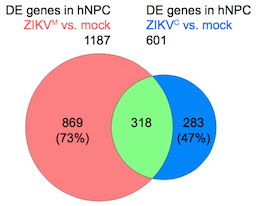Imagine the game of pick up sticks. It’s hard to extract one stick from the pile without moving others. The same problem exists, in a much more complex way, in the brain. Pulling on one gene or neurotransmitter often nudges a lot of others.

Andrew Escayg, PhD
That’s why a recent paper from Andrew Escayg’s lab is so interesting. He studies genes involved in epilepsy. Several years ago, he showed that mice with mutations in the SCN8A gene have absence epilepsy, while also showing resistance to induced seizures. SCN8A is one of those sticks that touches many others. The gene encodes a voltage-gated sodium channel, involved in setting the thresholds for and triggering neurons’ action potentials. Mutating the gene in mice modifies sleep and even enhances spatial memory.
Escayg’s new paper, with first author Jennifer Wong, looks at the effect of “knocking down” SCN8A in the hippocampus in a mouse model of mesial temporal lobe epilepsy. This model doesn’t involve sodium channel genes; it’s generated by injection of a toxin (kainic acid) into the brain. The finding suggests that inhibiting SCN8A may be applicable to other forms of epilepsy. Escayg notes that mesial temporal lobe epilepsy is one of the most common forms of treatment-resistant epilepsy in adults.
Knocking down SCN8A in the hippocampus 24 hours after injection could prevent the development of seizures in 90 percent of the treated mice. “It is likely that selective reduction in Scn8a expression would have directly decreased neuronal excitability,” the authors write. It did not lead to increased anxiety levels or impaired learning/memory.
Currently, no available drugs target Scn8a specifically. However, antisense approaches for neurodegenerative diseases have been gaining ground – perhaps epilepsy could fit in.







